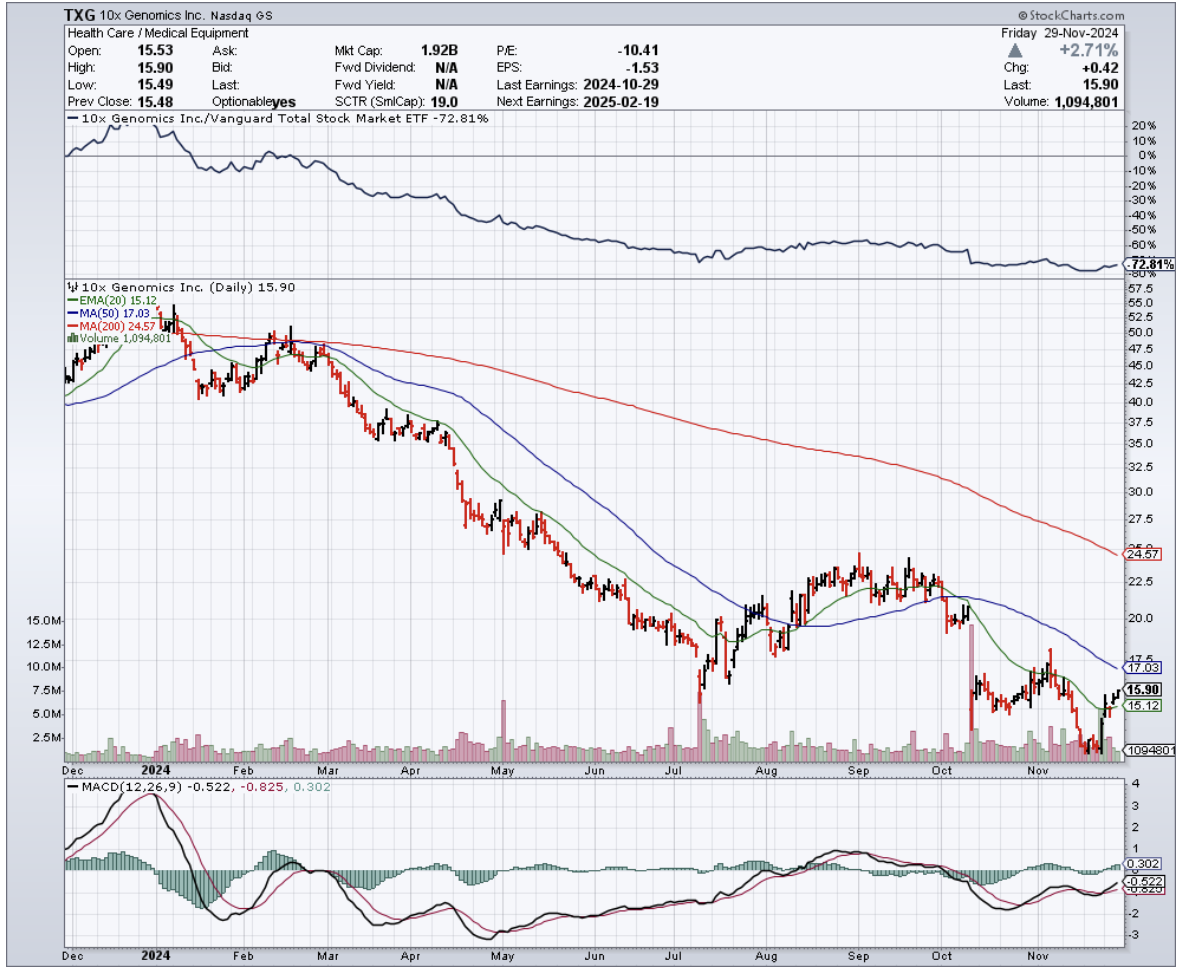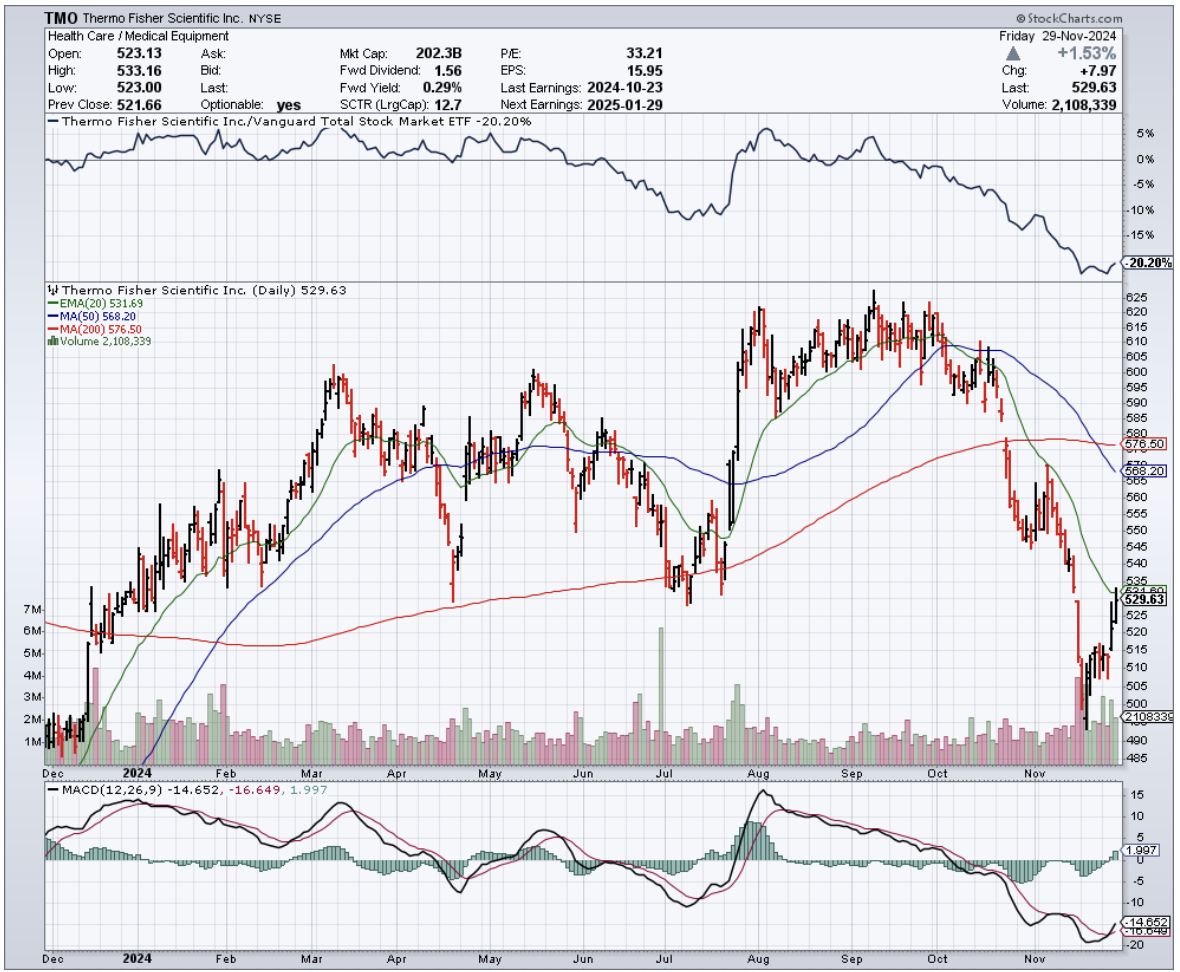Grant Expectations
The first time I visited the National Institutes of Health (NIH), I got lost trying to find the bathroom and ended up in a lab where someone was studying glow-in-the-dark zebrafish.
"Wrong door," the researcher said, "but at least you didn't walk in on the fruit fly mating experiments."
Such wrong turns seem oddly fitting now as the NIH, with its $45 billion research budget, navigates its own unexpected direction under new director Dr. Jay Bhattacharya.
This reminds me of a conversation I had with a university tech transfer officer who once described the grant distribution process as "academic musical chairs but with billion-dollar stakes."
Bhattacharya seems determined to change the tune, proposing limits on how many grants individual researchers can hoard like squirrels before winter.
It's a move that has some biotech companies sweating through their lab coats, particularly 10x Genomics (TXG), whose financial statements show a quarter of their revenue sprouting from NIH grants like bacteria in a petri dish.
The last time someone tried to cap grants—back in 2017—the scientific community reacted as if someone had suggested replacing peer review with a Magic 8-Ball.
The proposal was quietly buried in the bureaucratic equivalent of a drawer labeled "Ideas We'd Rather Forget." But like that mysterious experiment growing in the back of the lab fridge, it's back.
Meanwhile, Robert F. Kennedy Jr. has been making noise about trimming the NIH's organizational chart. While Kennedy's influence carries weight, Congress still holds the purse strings, and they've historically treated the NIH like their favorite child at allowance time.
Bhattacharya's critique of the NIH's traditionally cautious approach to funding feels like watching someone suggest skydiving to their risk-averse aunt.
He's pushing for more high-risk, high-reward projects, which could be a windfall for companies playing in cutting-edge sandboxes like CRISPR and AI-driven diagnostics.
Illumina (ILMN) and 10x Genomics are practically salivating at the possibilities, while established institutions might find themselves feeling like that last teenager picked for the dodgeball team.
The global picture adds another layer of intrigue to these changes. While we're debating grant caps and organizational reshuffling, China has been quietly doubling its biotech investments over the past decade, particularly in regenerative medicine and precision oncology.
If NIH reforms stumble, U.S. companies could find themselves playing catch-up. For those who want to take part in the action, this presents an opportunity to diversify.
International markets with increasing government funding for biotech offer new avenues for growth. Global biotech ETFs could also serve as a hedge against domestic uncertainties.
Against this backdrop, diversification becomes key. Consider companies with revenue streams less tethered to NIH funding.
Thermo Fisher Scientific (TMO) and Danaher (DHR), for example, boast a global footprint that cushions them against domestic policy shifts.
After all, the global life sciences tools market, valued at $52 billion today, is projected to grow to $95 billion by 2030, with a Compound Annual Growth Rate (CAGR) of nearly 15.89%.
Emerging frontiers like gene therapy and personalized medicine also deserve attention. These fields aren’t just buzzwords—they’re the future of biotech.
ETFs focused on genomic innovation, like the ARK Genomic Revolution ETF (ARKG), provide exposure to high-growth sectors while spreading risk.
So, what’s the play here? Well, investment opportunities in this space will depend on your appetite for disruption.
10x Genomics presents an intriguing case at $15.90. Yes, up to 25% of its revenue comes from NIH funding, making it vulnerable to policy shifts.
But this same connection positions them perfectly to benefit from Bhattacharya's high-reward research initiative. The upside potential here is massive for those willing to weather some volatility.
Illumina stands out at $144.15 as a different kind of opportunity.
Their lock on the genomic sequencing market combined with aggressive R&D investments offers that rare combination: steady performance with genuine growth potential. Think of it as smart defense for your biotech portfolio.
Then there's Thermo Fisher Scientific, trading at $529.63. Their global reach and diverse revenue streams make them remarkably resilient to NIH policy changes.
The stock won't double overnight, but it offers the kind of reliability that lets you sleep soundly.
In the end, the NIH's transformation under Bhattacharya feels a bit like watching a scientist redesign an experiment mid-trial. Some see doom and gloom in these changes, while others spot golden opportunities.
But if you ask me whether the biotech glass is half empty or half full, I'd say we're missing the point entirely—in this industry, the glass has always been refillable.



